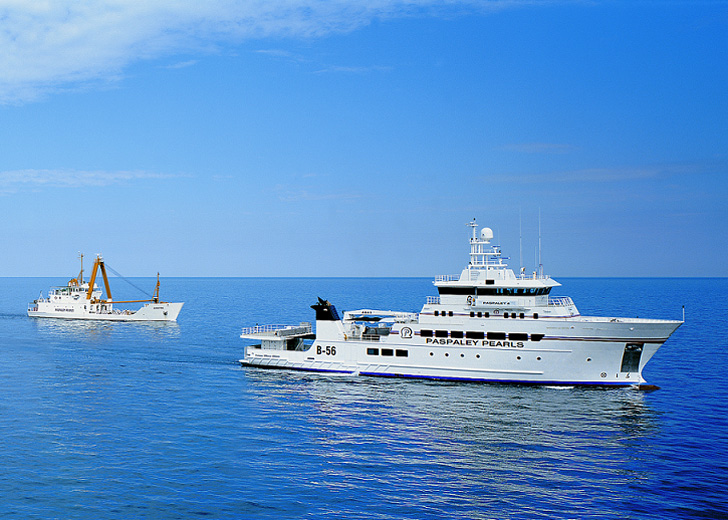Paspaley and the sea

Paspaley and the sea
When young Nicholas Paspaley MBE sailed his first pearling lugger out of Broome in the 1930s, he was armed with nothing more than guts and daring. No one knew just how important this man was going to be, or that his name would forever be associated with nature’s most beautiful and often elusive gem – the Australian South Sea pearl.
The Greek-born pearling pioneer’s adventures in the unpredictable waters off Broome and Darwin are today the stuff of legends, conjuring up visions of danger, romance and unimaginable treasures. In the 1930 and 1940s, he and his crew dove for pearl shells, which were then shipped to New York for use in button production.
When the manufacture of plastic buttons significantly reduced the world’s demand for mother-of-pearl in the 1950s, Nicholas decided to attempt what was then deemed almost impossible – cajole the sea into producing the perfect pearl. Dauntless and enterprising, the master pearler beat all the odds, producing priceless gems of unequalled beauty and lustre.
A family legacy
Nicholas Paspaley’s legacy lives on to this day. Under the leadership of second-generation pearlers Nick Paspaley AC, Roslynne Bracher AM and Marilynne Paspaley AM, and their children, Paspaley Pearling Company continues to revolutionize the global pearling industry by investing in new technologies, state-of-the-art purpose-built pearling vessels and the best talent in the business.
But Paspaley’s inherent strength has been and will always be based on the industry leader’s passion, love and respect for the Pinctada maxima oyster.
“We have brought the world pearls that are as fine in quality and as beautiful as any natural pearl ever found,” Nick told a group of trade guests during a recent visit to Kuri Bay, site of Australia’s first pearl farm. “Our pearls are the real thing.”
“Our techniques have been recognized as the industry standard and adopted by other pearling companies. However, no one really does pearling like us. Paspaley produces the highest quality pearls because we are the only company to go that extra step.”
Results that speak for themselves: Paspaley Australian South Sea pearls have remarkably thick nacre, giving the gems a lustre and iridescence peerless in the trade. Much larger than other pearls, they also come in infinite hues, from white and silver to gold and subtle shades of pink.
The pearl industry benchmark
“Paspaley is the benchmark for pearls worldwide for a reason,” said Richard McLean, senior advisor for pearling at Paspaley. Continually investing in the on-going development of standards by which the industry is judged by today; often enforcing operational standards well in advance of base requirements.
“The oyster is gently handled at least 200 times throughout the two years prior to harvesting and a pearl being produced,” said McLean, a former Paspaley diver and an industry veteran of more than 30 years.
“A lot of things could go wrong in the harvesting of a pearl, it’s a complex, multi-step process – from pearl shell fishing, transporting to the farms, seeding and husbandry.”
A way of life
Pearling veteran Russell Hanigan, and now sales executive of the Australian Pearl Centre, noted: “To us, producing these priceless beauties is a lifelong passion. To Paspaley, it is a way of life.”
Hanigan, who started his career diving for pearl shells off Western Australia’s Eighty Mile Beach 40 years ago, said the passion Nicholas Paspaley Senior MBE had for pearling continues to inspire the company.
“Today, instead of wooden boats with no engines or computers, we have a fleet of state-of-the-art pearling vessels, the best Mallard seaplanes and floating ultramodern labs,” he said. “Paspaley has invested in all of this to ensure that the Pinctada maxima oyster receives the care and attention required to produce the highest quality pearls.”
“If that’s not unflinching commitment to quality, then I don’t know what is.”